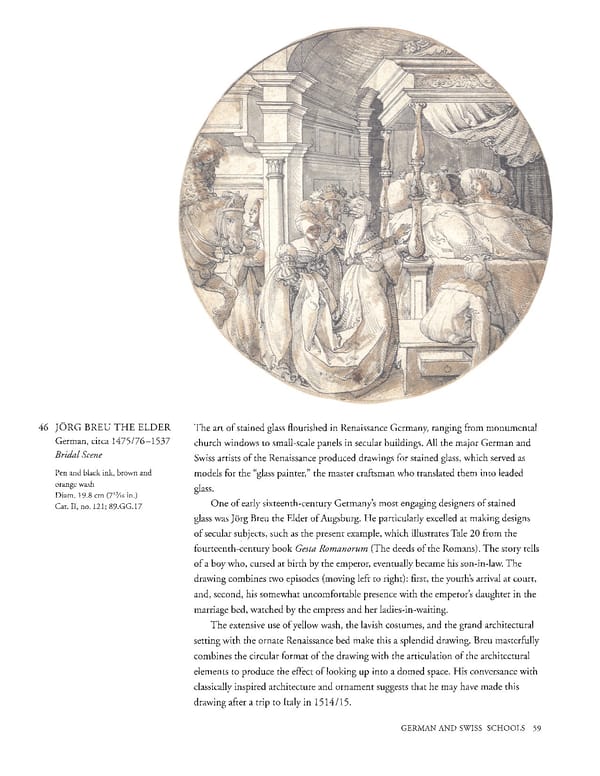46 JORG BREU THE ELDER The art of stained glass flourished in Renaissance Germany, ranging from monumental German, circa 1475/761537 church windows to smallscale panels in secular buildings. All the major German and Bridal Scene Swiss artists of the Renaissance produced drawings for stained glass, which served as Pen and black ink, brown and models for the "glass painter," the master craftsman who translated them into leaded orange wash glass. Diam. 19.8 cm (7 13/16 in.) Cat. II, no. 121; 89.GG.17 One of early sixteenthcentury Germany's most engaging designers of stained glass was Jorg Breu the Elder of Augsburg. He particularly excelled at making designs of secular subjects, such as the present example, which illustrates Tale 20 from the fourteenthcentury book Gesta Romanorum (The deeds of the Romans). The story tells of a boy who, cursed at birth by the emperor, eventually became his soninlaw. The drawing combines two episodes (moving left to right): first, the youth's arrival at court, and, second, his somewhat uncomfortable presence with the emperor's daughter in the marriage bed, watched by the empress and her ladiesinwaiting. The extensive use of yellow wash, the lavish costumes, and the grand architectural setting with the ornate Renaissance bed make this a splendid drawing. Breu masterfully combines the circular format of the drawing with the articulation of the architectural elements to produce the effect of looking up into a domed space. His conversance with classically inspired architecture and ornament suggests that he may have made this drawing after a trip to Italy in 1514/15. GERMAN AND SWISS SCHOOLS 59
 Masterpieces of the Getty Museum: Drawings Page 59 Page 61
Masterpieces of the Getty Museum: Drawings Page 59 Page 61